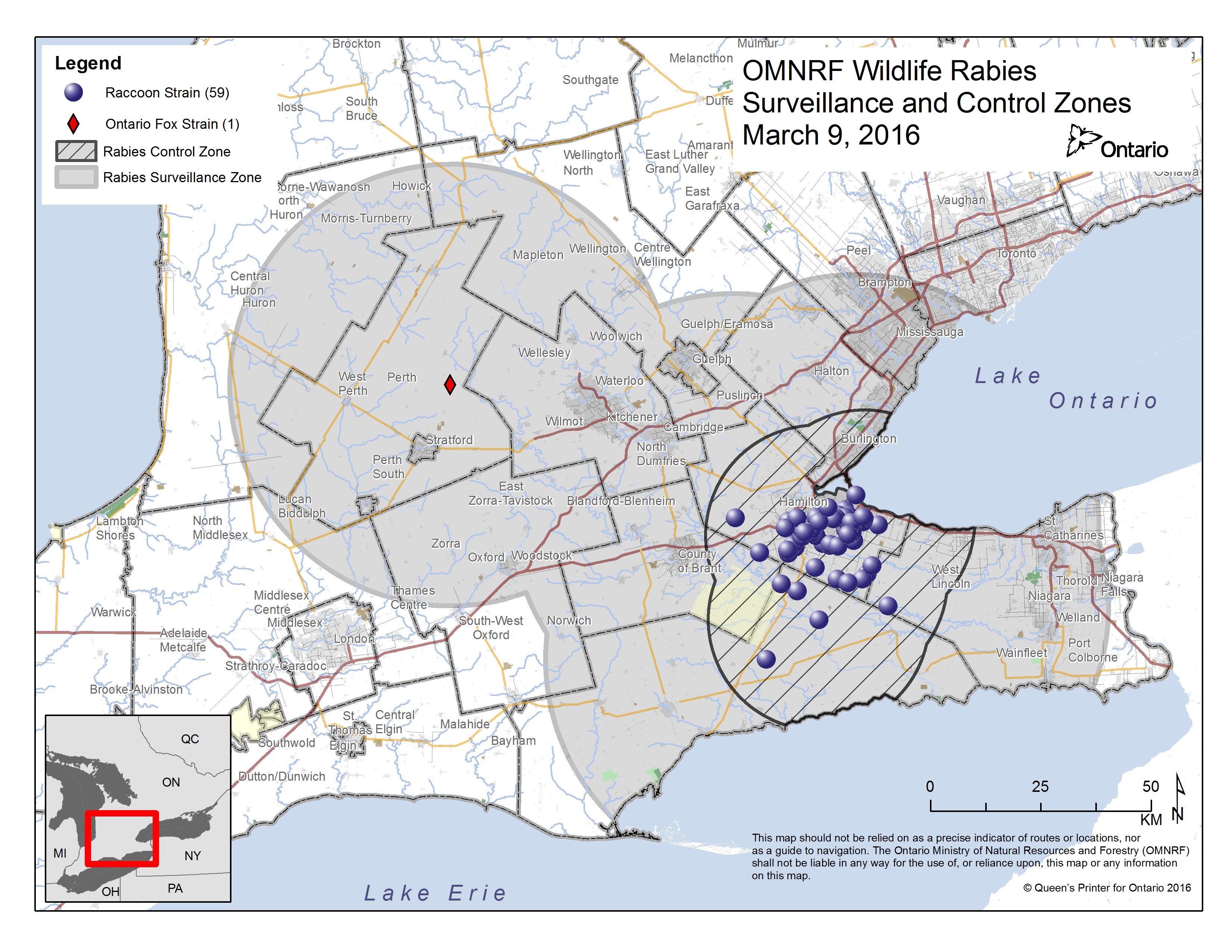Rabies in Ontario
The week of March 14,2014
To date there are 59 positive cases of raccoon strain rabies in the Hamilton/Haldimand region and one in the Niagara region. So far 400 animals from the Hamilton area have been tested.The majority of the positives are found in animals found dead in a field, and much less in the animals that get reported for behaving unusual. Of the found dead group 40% test positive for rabies.
The carcasses also get tested for distemper and to date 28 of 30 rabies positive animals also have tested positive for distemper. The turn around time on the distemper test is a bit longer and more results are expected soon.
The MNRF lab in Peterborough has the capacity to test approximately 200 animals a week, so we need to ensure we sent only relevant carcasses for testing. If you have a suspect animal that should be tested (no human or animal contact), please contact Tore Buchanan at 705 755-2275 to arrange for pick up. Carcasses should be frozen and bagged with a label with species, date found/euthanized, reason for submitting and the location the animal was found. Rabies testing requires the brain to be intact, so make sure the animal has an intact head (not shot in the head or run over with the head flattened) CWHC is not able to perform rabies testing at this time, so please don’t send them specimens for rabies testing.
Statistics from New York State show that of the approximately 500 cases of raccoon strain rabies they see annually 60% of those involve raccoons, skunks are the second most common animal and groundhogs come it at number three. Coyotes and fox cases are not as common there as you might expect.
The MNRF is actively baiting. A 25 km radius around each occurrence was baited with vaccine-laced bait via plane, however the urban areas need to be baited by hand and this will take a bit longer. In April they will start baiting the 50 km radius area around the active cases found and in July they will start the whole process over again.
It is assumed that approximately 70% of the target animals find/consume bait and unfortunately not all of those animal will develop a immunity, however this method is still considered the most effective out there.
To summarize:
- If there has been animal contact with a suspect animal please contact OMAFRA
- If there has been human contact with a suspect animal please contact your local Health Unit
- For AWC wanting to submit a suspect specimen for testing please contact Tore Buchanan at 705-755-2275 to arrange for pick up





